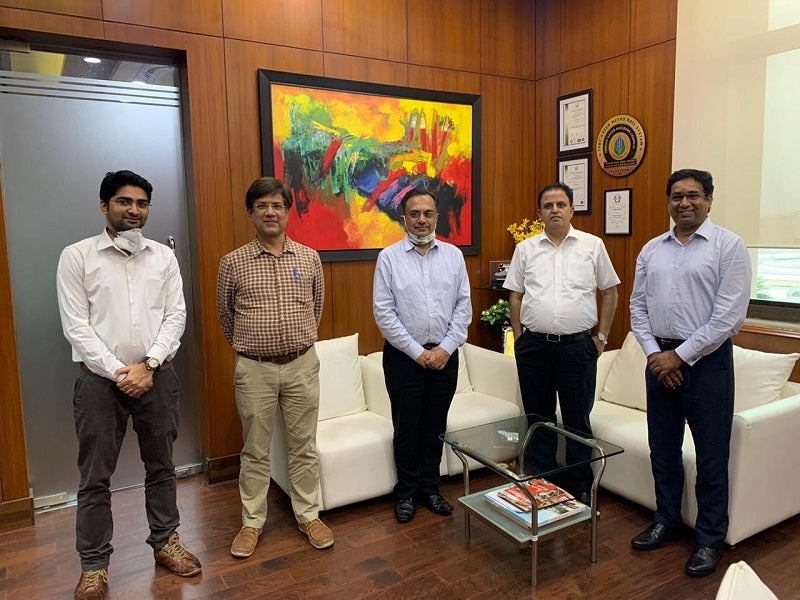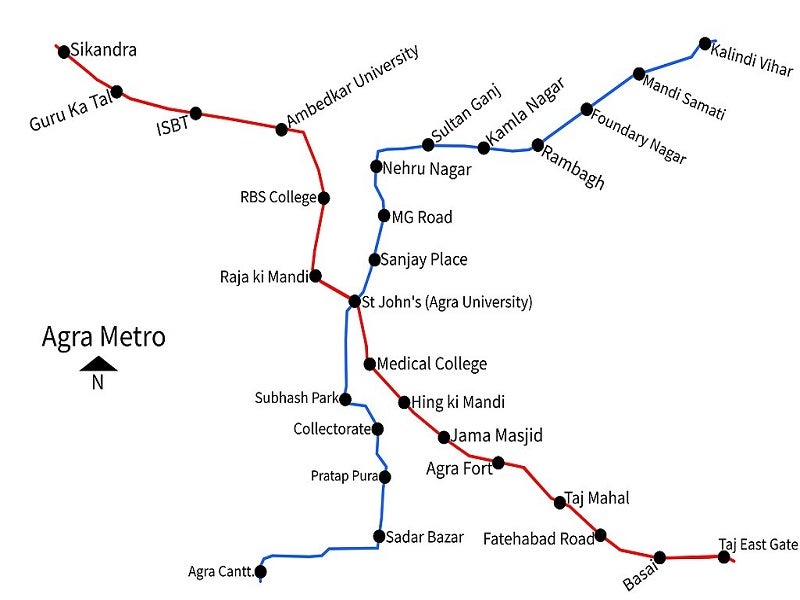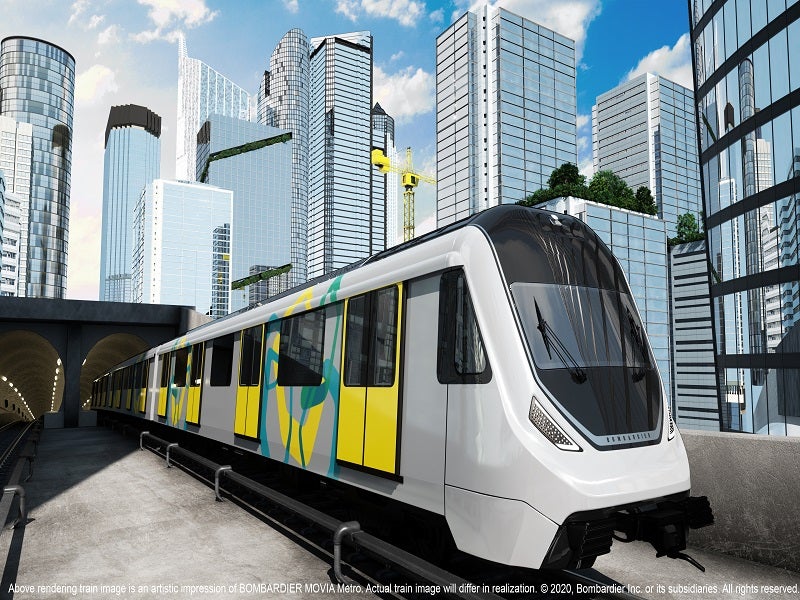Agra Metro is an urban mass rapid transit system (MRTS) being developed in Agra, the third most populated city in the state of Uttar Pradesh, in Northern India.
Uttar Pradesh Metro Rail Corporation (UPMRC), a joint venture (JV) between the Indian government and the Uttar Pradesh state government, is the implementing agency of the project. UPMRC also operates the Lucknow Metro and Kanpur Metro rail systems in the state.
The Agra Metro project was launched in March 2019 while construction began in December 2020. The estimated cost of the project is €908m ($1,099.39m). The new metro service is scheduled to start operations in January 2024.
The project involves the development of two corridors, with 27 stations in the 29.4km-long first phase, to improve connectivity to and from important tourist destinations in the city including the Taj Mahal, Agra Fort, and Sikandra. The second phase development plans are yet to be revealed by UPMRC.
Ridership details of the Agra Metro
The metro system is expected to cater to 2.6 million residents of Agra while also serving as a major transportation system for more than six million tourists a year visiting the city.
It is projected to have a daily average ridership of 570,000, 740,000, and 870,000 passengers in 2024, 2031, and 2041, respectively.
Agra Metro rail project details
The MRTS project will have two corridors, one of which will be between Sikandara and Taj East Gate (Hotel Trident). The second corridor will be between Agra Cantonment and Kalindi Vihar.
The 14km-long first corridor will include elevated and underground stretches, as well as switch-over ramps (SOR) between them. A maintenance and stabling depot is being built at PAC Ground. The entrance to the depot will be from the Taj Mahal station.
The second corridor will be a 15.4km-long elevated line. It will be served by a depot with an entrance length of approximately 800m, after the Kalindi Vihar Station.
A new station will be built at St. John’s College, to serve as an interchange between the two corridors.
Line routes and stations of the Agra Metro
Corridor one will have both elevated and underground sections. The line will originate from the Sikandara elevated station, which will be 105m away from Akbar’s Tomb. It will then continue towards the east.
The first four stations, namely Sikandara, Guru Ka Taal, ISBT, and Shastri Nagar, and the last three stations at Fatehabad Road, Basai, and Taj East Gate will be elevated. The line will be served by new underground stations proposed at Raja Balwant Singh (RBS) College, Raja Ki Mandi, St. John’s College, Medical College, Jama Masjid, Agra Fort, and Taj Mahal Station (Purani Mandi).
The second corridor will include elevated stations, namely Agra Cantonment, Sadar Bazar, Pratap Pura, District Collectorate, Subhash Park, St. John’s College, Hariparvat Chauraha, Sanjay Place, MG Road, Sultanganj Crossing, Kamla Nagar, Ram Bagh, Foundry Nagar, Agra Mandi, and Kalindi Vihar.
The Sultanpura station is proposed to be developed as a potential future station in the second corridor.
Agra Metro project infrastructure
The Agra Metro will have a 1,435mm standard gauge track, which will support operations at a maximum speed of 90km/h.
The metro system will feature infrastructure such as pedestrian pathways, skywalks, subways, and foot-over bridges to enhance the safety of pedestrians.
The stations will have parking facilities, feeder bus systems, bike sharing facilities, public toilets, retail spaces, workshops, and other maintenance infrastructure.
Rolling stock and signalling systems for the Agra Metro
Alstom will provide MOVIA metro three-car trainsets and the advanced Bombardier CITYFLO 650 rail control solution, a fully-automated signalling system, which uses wireless technology to enable track-to-train communication.
The modern, state-of-the-art rolling stock will have high acceleration and deceleration, and will be able to operate at a maximum speed of 120km/h.
The new modern, high-capacity MOVIA metro cars feature the Bombardier MITRAC propulsion and control system, and the BOMBARDIER FLEXX Metro bogies.
Financing for the Agra Metro project
A portion of the funding for the Agra Metro Rail project will be contributed by the national and state governments on an equal equity basis. Funding will also be procured from international funding agencies.
The Government of India signed an agreement with the European Investment Bank (EIB) for the first tranche loan, worth €250m ($283m), for the project in December 2021. The first tranche is part of a €450m ($545m) loan approved by the EIB for the project.
Contractors involved
Rail India Technical and Economic Service (RITES), a government-owned engineering services company, prepared the detailed project report (DPR) for the Agra Metro in December 2017. A supplementary document to the DPR was prepared in 2019, with revised cost estimates and financial analysis.
Bombardier Transportation was awarded a contract to deliver 201 MOVIA metro cars, and the CITYFLO signalling technology for the Kanpur and Agra metro projects in July 2020. The company was acquired by Alstom in January 2021.
Sam India Builtwell, a general contractor, was awarded the tender worth Rs2.73bn ($37m) to construct the elevated viaduct and three elevated stations, namely Fatehabad Road, Basai, and Taj East Gate, in October 2020.
Larsen & Toubro (L&T), an Indian multi-national conglomerate, won the bid to design, supply, and install ballastless tracks and fastening systems for phase one of the Agra Metro project.
HFCL, a telecom company based in India, received a contract worth Rs2.21bn ($30m) to design, supply, install and commission telecommunication systems for the first two corridors of Kanpur Metro, and the first corridor of Agra Metro, in March 2021.
East Metals, a Swiss iron and steel products trading company, was contracted to supply head hardened rails for the project in April 2021.










